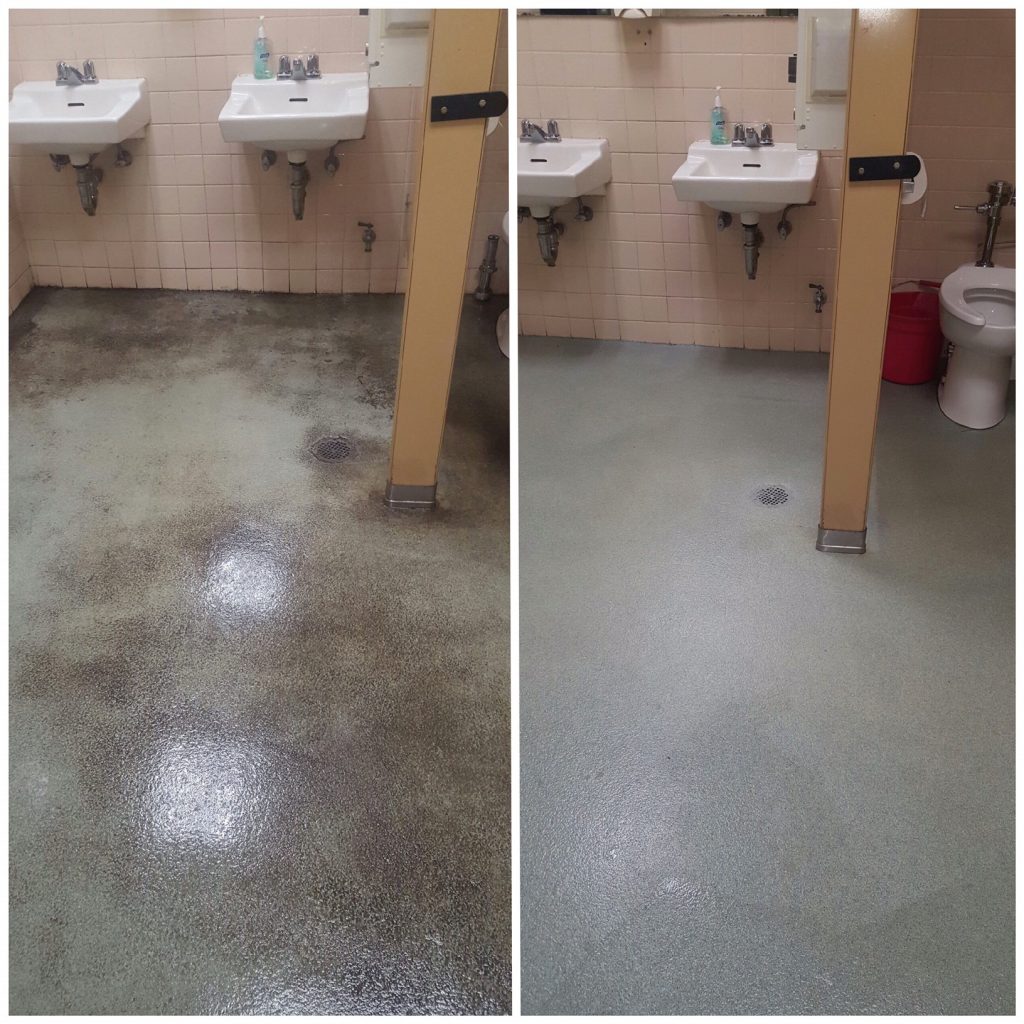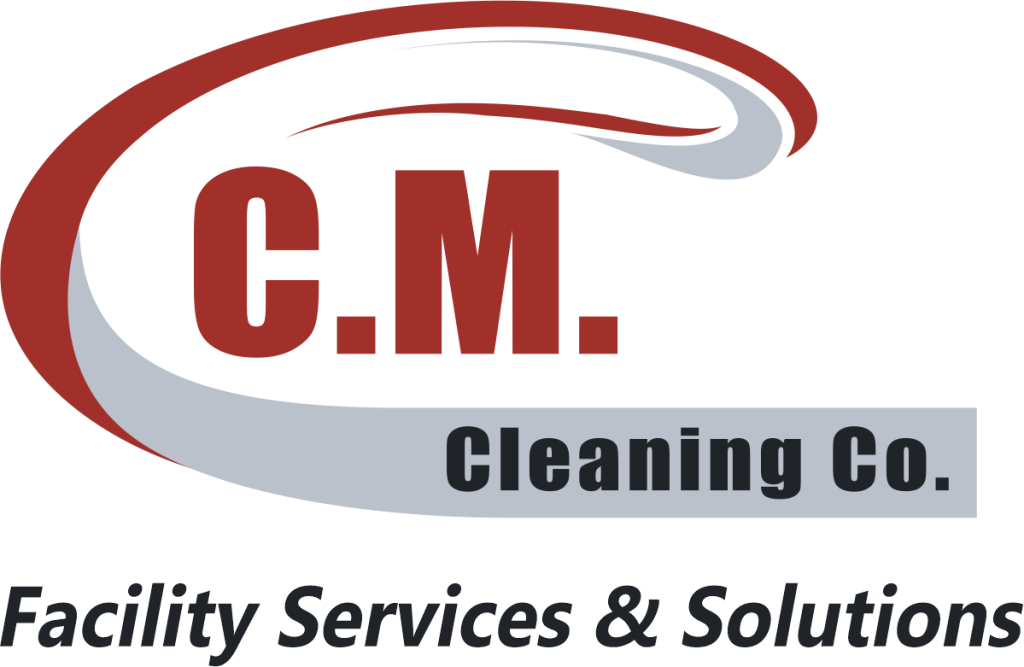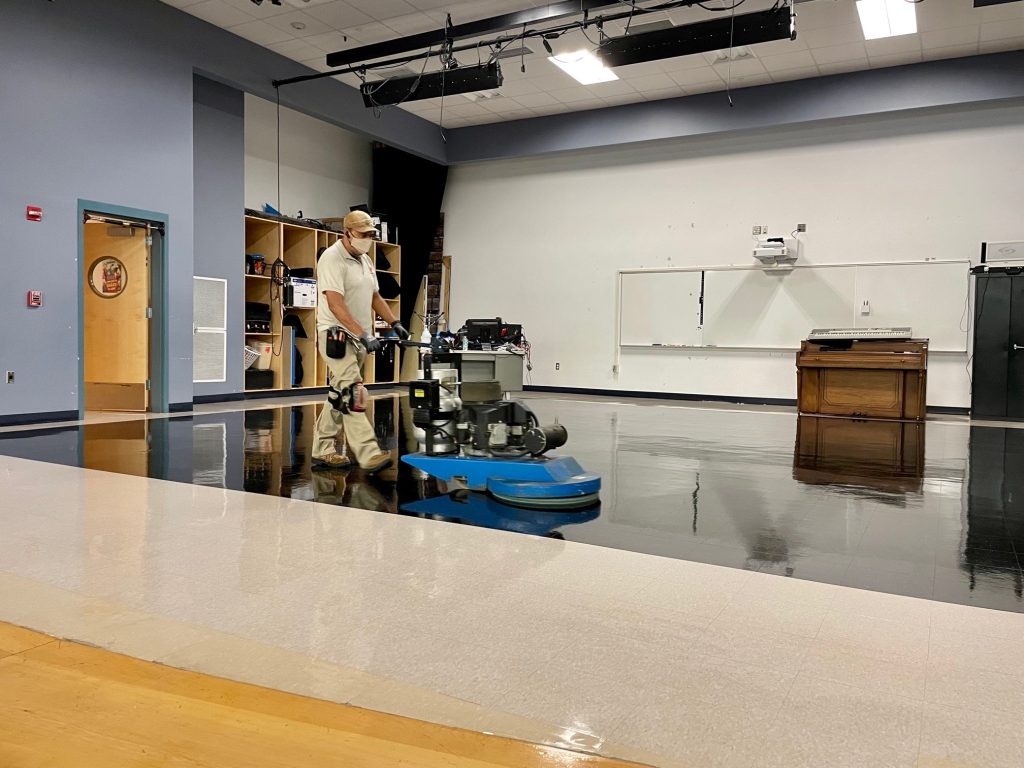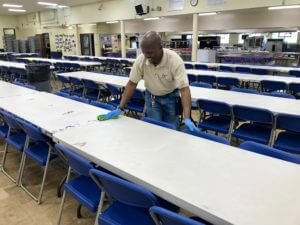
If you have poor restroom management in your facility, studies have shown that you are losing out on recurring in person sales by more than 50%!
People connect the idea that poor restroom management means poor cleanliness standards in the facility as a whole. So, if you rely on a recurring customer base, like most businesses do, you are leaving money on the table if you don’t have proper restroom management.
Prepare first by ensuring you have all of the supplies needed for the job. We need all purpose cleaner, glass cleaner, disinfectant, trash bags, refills for all paper and soaps, and finally the tools for each part of the job.
At CM Cleaning we have a primary focus on Avoiding Cross Contamination. We do this by color coordinating our equipment to the area they are assigned to.This way we are not using the same microfiber cloth on a toilet and an office desk.
Pre-cleaning starts with dusting the entire area from top to bottom. From the air vents, to the wall partitions, light fixtures, dispensers and all corners.
Then spray all surfaces with disinfectant. We want to allow for the necessary dwell time. So while that is doing it’s job, we will move onto the next step.
We take off all large debris from the bathroom, especially around the urinals and toilets. Then we scrub all interiors of toilets, urinals, bowls, seats and drains. Replacing any urinal screens. Then wipe down all toilets and urinals including the seats and undersides.
Next, we apply the cleaner to all high touch point areas such as toilets, shower walls, urinals, sinks, dispensers, and door handles. For any tough stains that we find, or mineral deposits, we will use an acid bowl cleaner.
Then we clean the mirrors with glass cleaner and paper towel. Make sure to take your time so that you do not leave streaks behind.
Refill all dispensers, and remove all paper debris as well. Empty the trash cans, napkin holders, and sharps. Then disinfect all receptacles inside and out, and allow to air dry before adding the collective material.
For the walls, and the dividers in the stalls, our team first spot cleans any easily noticeable stains or marks. Then we apply cleaning solution from bottom to top with allowing for dwell time, and then wiping with a cloth.
Then for the mirrors or any glass areas we spray the glass cleaner and use the squeegee and/or paper towels to get a nice sparkling finish!
Then dry mop the entire floor surface, and toss the debris into the trash. Then remove all trash from any containers. Wipe down the inside of the receptacles as well!
Finally, we wet mop using the mop that is solely for restrooms to avoid cross contamination.
When it comes to the floor drains, we have to be incredibly careful. We do not recommend using any Sulfuric Acid based cleaner – especially if the building has a septic tank. But we do use an enzyme based drain opener in order to dissolve most of the gunk stuck in there.
Time for the final disinfectant. Remember how we sprayed everything but allowed for the dwell time? Now it is time to wipe it all down! Use a microfiber cloth to wipe all high touch areas first. Use different cloths for different areas to avoid cross contamination! Make sure to remove ALL chemicals from the high touch areas to avoid chemical burns! Now you have a pleasant restroom!






 to clock-in through the timing system. This allows us to view that they have begun their shift on location. Similarly, at the end of their shift, they utilize the system to clock-out. This system is much more than meets the eye as a payroll tool. The system sends us alerts if our employee has not clocked in on time, or if they do not clock out on time. So, if one of our employees were to ever be injured or became unconscious while alone in your building, we would be notified by the tracking system at the end of their shift if they have not clocked out. At that point, we can call the employee to investigate the situation, or send help if needed. On top of all this, T-Tracks allows us to simply know which of our personnel is in your building, and during what time frame.
to clock-in through the timing system. This allows us to view that they have begun their shift on location. Similarly, at the end of their shift, they utilize the system to clock-out. This system is much more than meets the eye as a payroll tool. The system sends us alerts if our employee has not clocked in on time, or if they do not clock out on time. So, if one of our employees were to ever be injured or became unconscious while alone in your building, we would be notified by the tracking system at the end of their shift if they have not clocked out. At that point, we can call the employee to investigate the situation, or send help if needed. On top of all this, T-Tracks allows us to simply know which of our personnel is in your building, and during what time frame. be properly eradicated. Common pollutants include dust, mold, secondhand smoke, and pollens. When it comes to the more dangerous air pollutants such as asbestos, radon, and cigarette smoke it is crucial to know how to best avoid exposure in large concentrations and/or over prolonged periods of time.
be properly eradicated. Common pollutants include dust, mold, secondhand smoke, and pollens. When it comes to the more dangerous air pollutants such as asbestos, radon, and cigarette smoke it is crucial to know how to best avoid exposure in large concentrations and/or over prolonged periods of time.


